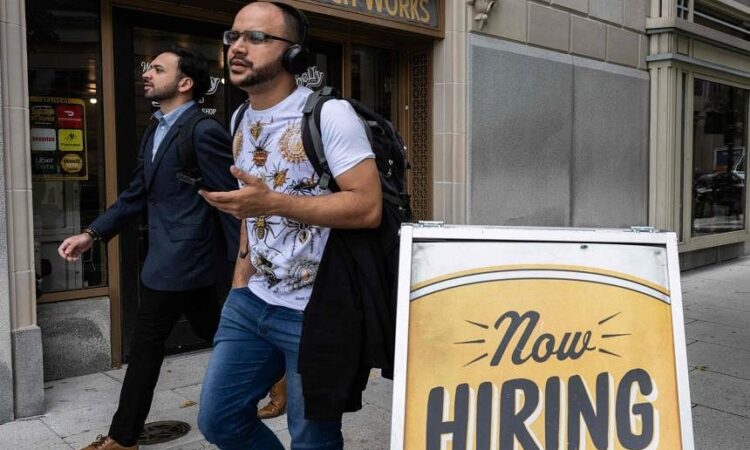
WASHINGTON – The United States has seen gross domestic product (GDP) growth blow past predictions, hiring numbers surge unexpectedly and consumers still spending even as interest rates climbed – deftly averting a dreaded recession in 2023.
While interest rates have hit the highest level in more than two decades, a situation ordinarily accompanied by higher unemployment and a consumption pullback, it has not been the case this time.
What accounts for the surprise?
‘Value of talent’
Low unemployment, wage growth and hiring have underpinned consumers’ willingness to spend.
The situation stems from turmoil businesses experienced during Covid-19 when executives struggled to hire, train and retain talent.
This has made them think twice before resorting to job cuts, even when faced with a possible economic slowdown, said EY chief economist Gregory Daco.
Instead, they favoured reducing hiring.
“As a result, we’ve seen more resilience in the labour market,” Mr Daco told AFP.
“A unique facet of this business cycle is that the value of talent has shifted,” he added.
Nationwide Mutual chief economist Kathy Bostjancic said that in the meanwhile, even as private sector hiring cooled, “non-cyclical government, healthcare and education propelled much of employment growth”.
Purchasing power
ZipRecruiter chief economist Julia Pollak said Americans are snagging jobs and wage increases, while annual real wage growth has been positive since May 2023.
“Declining inflation and rising purchasing power are fuelling strong consumer spending,” she told AFP.
Although online job posting numbers have fallen steadily from a peak in November 2021, Ms Pollak said the level remains historically high.
But she noted that the labour market is slackening, with applications per job posting rising 30 per cent year on year in January based on ZipRecruiter data.
Government spending
Another factor is a series of measures including the US$2.2 trillion (S$2.96 trillion) Cares Act in 2020 and US$1.9 trillion American Rescue Plan a year later, through which the government approved economic aid for recovery from the Covid-19 pandemic.
The payments were certainly “effective in providing inflationary pressures”, said Allianz Trade North America senior economist Dan North.
Shortly after, US President Joe Biden signed the Bipartisan Infrastructure Law in 2021, allowing US$1.2 trillion in transportation and infrastructure spending, and rolled out his landmark climate action plan, the Inflation Reduction Act in 2022.
While the US Federal Reserve has fought to slow the economy and quell inflation with rate hikes, Mr North said that “fiscal policy has been doing exactly the opposite”.
ZipRecruiter’s Ms Pollak added: “Government subsidies for electric vehicle, microchip and infrastructure investments are boosting business investment at a time when high interest rates might otherwise have caused it to plummet.”
EY’s Mr Daco said about 30 per cent of GDP growth in 2023 came from the government sector, which represents some 14 per cent of the economy.






